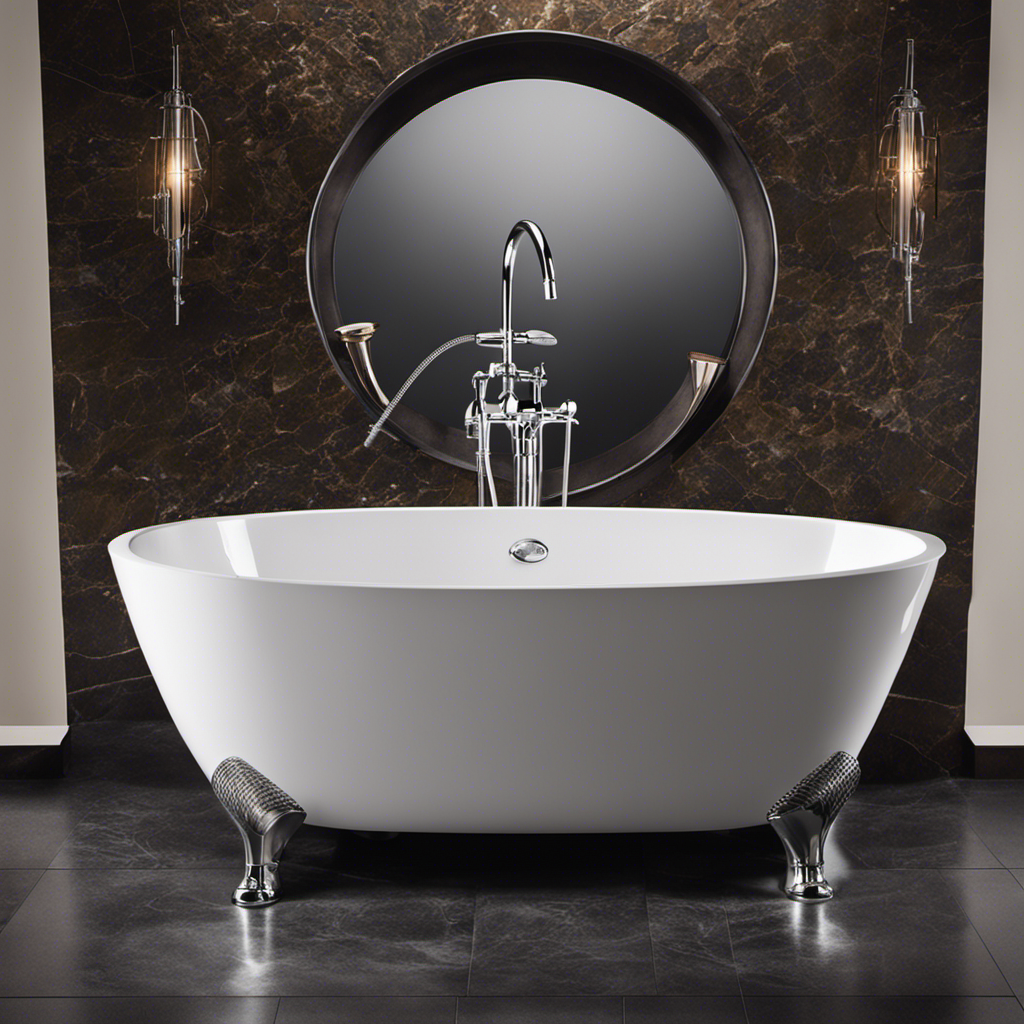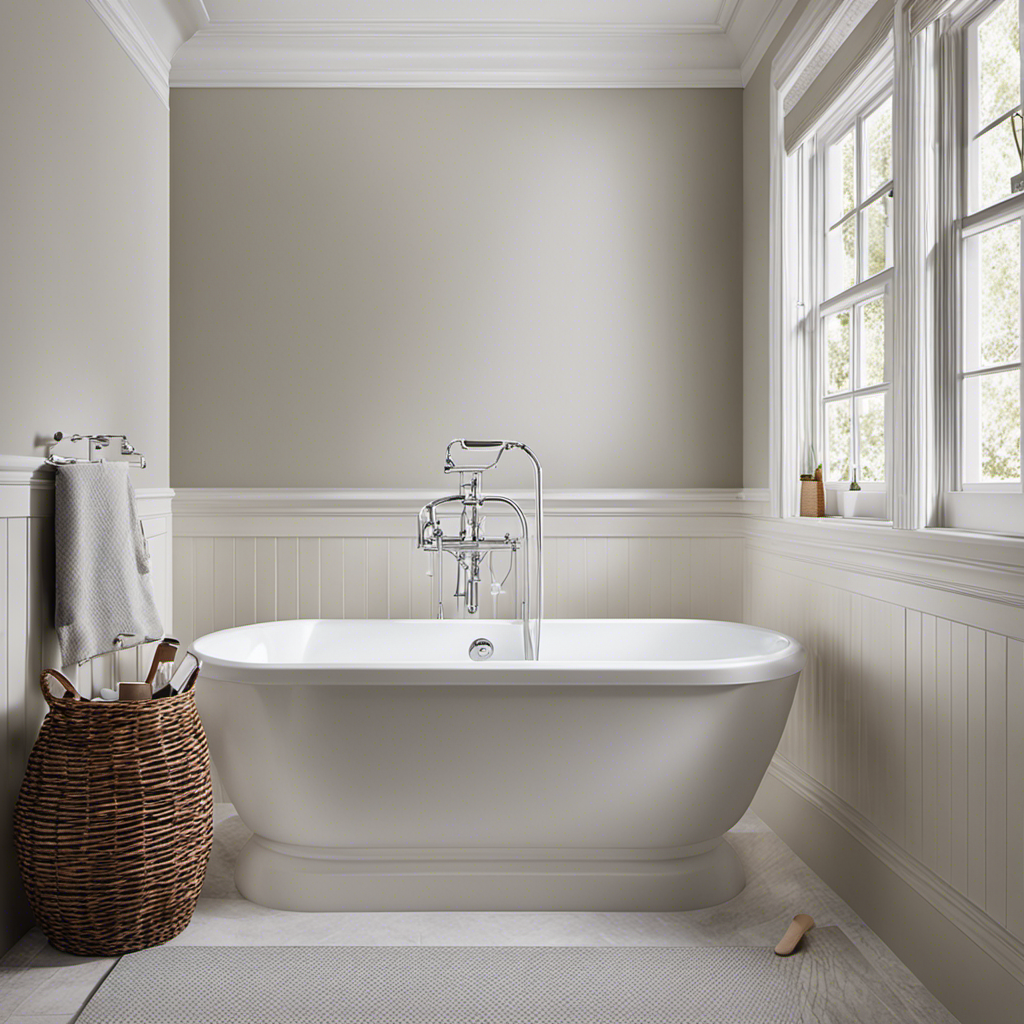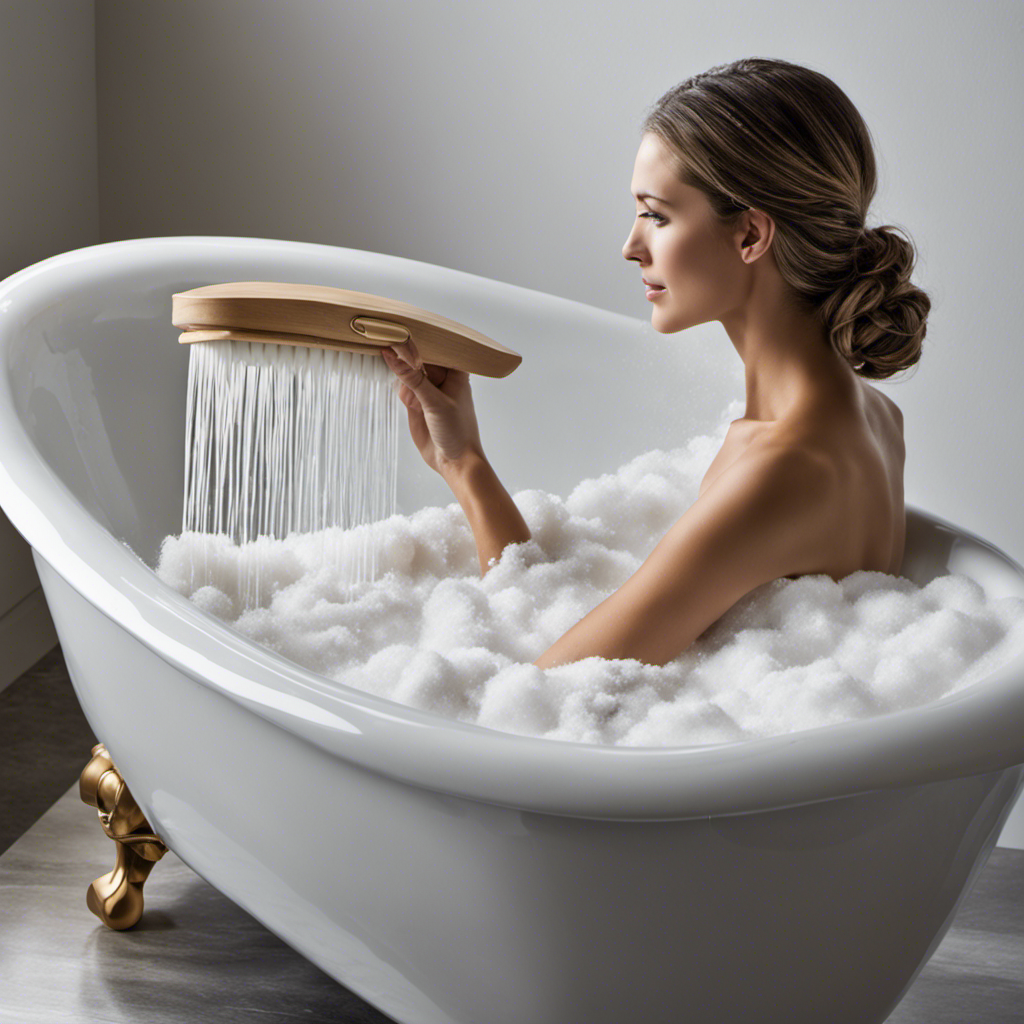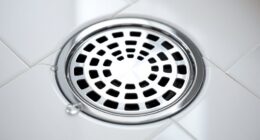As a bathtub aficionado, I must confess that I find myself captivated by the intricate workings of this watery oasis.
Have you ever wondered what each component of a bathtub is called? Fear not, for I shall enlighten you on this subject.
Prepare to dive into the world of drains, overflows, faucets, handles, spouts, tub bodies, and bathtub surrounds.
By the end of this article, you will possess a profound understanding of the inner workings of your beloved bathtub.
So, let’s plunge in and unravel the mysteries together, shall we?
Key Takeaways
- The main components of a bathtub include the drain, overflow, faucet, handles, and spout.
- The bathtub body can be made of different materials such as cast iron, acrylic, fiberglass, or enameled steel, and it requires proper installation and regular cleaning and maintenance.
- There are various options for bathtub surrounds, including materials like tile, acrylic, and fiberglass, each with different characteristics to consider.
- The choice of bathtub faucet and fixtures depends on personal preference, functionality, budget, and installation and maintenance requirements. Additional fixtures like hand showers, showerheads, and water jets can also be considered.
The Drain
To prevent clogs, make sure you regularly clean out the bathtub drain.
The drainage system in a bathtub plays a crucial role in maintaining proper water flow and preventing clogs. It consists of several key components, including the drain pipe, strainer, and stopper.
The drain pipe is responsible for carrying water from the bathtub to the main plumbing system. The strainer acts as a filter, preventing larger objects from entering the drain and causing blockages. Lastly, the stopper is used to control the flow of water and can be closed or opened as needed.
Regularly cleaning the drain and removing any hair, soap scum, or debris can help prevent clogs and keep the drainage system functioning efficiently.
The Overflow
The overflow in a bathtub is designed to prevent water from spilling over the edge. It is an essential component of every bathtub, ensuring that water levels remain within a safe range.
Here are some benefits of having an overflow installed in your bathtub:
-
Peace of mind: With an overflow, you can fill your bathtub to the desired level without worrying about water overflowing and causing damage to your bathroom.
-
Safety: The overflow acts as a safeguard against accidental flooding, protecting you and your home from potential water damage.
-
Convenience: When taking a bath, you can relax and enjoy the experience without constantly monitoring the water level.
-
Easy installation: Overflow installation is a straightforward process, and most bathtubs come with pre-drilled holes to accommodate it.
Now that we’ve covered the importance of the overflow, let’s move on to another essential part of a bathtub – the faucet.
The Faucet
Now that we’ve covered the overflow, let’s take a closer look at the faucet and its role in controlling the water flow in a bathtub.
The faucet is a crucial component of a bathtub, responsible for regulating the water supply and temperature. Faucet installation requires careful attention to detail, ensuring a secure connection to the water supply lines and proper sealing to prevent leaks.
When it comes to faucet repair, common issues include dripping faucets, leaks, or malfunctioning handles. Repairing a faucet often involves replacing worn-out parts, such as washers or cartridges, and ensuring proper alignment and tightening.
It is important to follow manufacturer instructions and use the appropriate tools for faucet repair to ensure a successful and reliable fix.
The Handles
When it comes to handles for bathtubs, there are several types available, each with its own unique features and benefits.
In this discussion, I will explain the different handle types, including lever handles, knob handles, and cross handles, and discuss the advantages and disadvantages of each.
Additionally, I will provide tips for proper handle installation to ensure a secure and functional attachment, along with maintenance advice to keep your handles in top condition for years to come.
Handle Types Explained
To understand the different handle types, you should know how they affect your overall bathtub experience. The handle on a bathtub plays a crucial role in controlling the water flow and temperature.
Here are four handle types commonly found in bathtubs:
-
Single-handle: This type allows for easy control of both water flow and temperature with just one lever. It provides convenience and simplicity.
-
Double-handle: With separate handles for hot and cold water, this type offers precise control over temperature. It may require more effort to adjust the desired temperature.
-
Cross-handle: This classic design adds a touch of elegance to your bathroom. It offers a traditional look and requires a twisting motion to adjust the water flow and temperature.
-
Lever-handle: This modern design provides easy and smooth operation, making it ideal for those with limited mobility. It offers a sleek and contemporary look to your bathtub.
Handle Installation Tips
Installing a new handle on your bathtub can be a straightforward process if you follow these tips.
First and foremost, handle selection is crucial. Ensure that the handle you choose is compatible with your bathtub model and meets your aesthetic preferences.
When it comes to handle replacement, start by turning off the water supply to avoid any potential accidents. Remove the old handle by unscrewing it and carefully inspect the cartridge for any signs of damage or wear. It is advisable to replace the cartridge at the same time as the handle to ensure optimal performance.
Once you have the new handle and cartridge ready, align them properly and tighten the screws securely.
Handle Maintenance Advice
One important aspect of maintaining your handle is regularly cleaning it to prevent buildup and keep it looking good. Here are four essential handle cleaning techniques to ensure its longevity and functionality:
-
Use a mild detergent: Gently scrub the handle with a soft cloth or sponge soaked in warm water mixed with a mild detergent. This will remove any dirt or grime without causing damage.
-
Avoid abrasive cleaners: Harsh chemicals or abrasive cleaners can scratch or damage the handle’s surface. Stick to non-abrasive cleaning solutions to preserve its appearance.
-
Regularly inspect for damage: Check the handle for any signs of wear or damage. If you notice cracks, breaks, or loose parts, it might be time for a handle replacement to prevent further issues.
-
Dry thoroughly after cleaning: Moisture can lead to rust or corrosion on metal handles. Ensure the handle is completely dry after cleaning to maintain its integrity.
The Spout
The spout is where the water comes out of in the bathtub. It is an essential component that allows for the controlled flow of water into the tub.
When it comes to bathtub materials, spouts can be made from a variety of materials such as brass, stainless steel, or plastic. Each material has its own advantages and considerations in terms of durability and aesthetics.
In terms of spout types, there are wall-mounted spouts, deck-mounted spouts, and freestanding spouts. Wall-mounted spouts are most commonly used and are attached to the wall near the tub. Deck-mounted spouts are installed on the deck of the tub, while freestanding spouts are not attached to any surface and are typically used in freestanding tubs.
Moving on to the next section, let’s discuss the tub body and its components.
The Tub Body
After discussing the spout, let’s move on to the next important part of a bathtub: the tub body.
The tub body is the main structure of the bathtub that holds the water and provides a comfortable bathing experience. Here are some key points about the tub body:
-
Bathtub Material: The tub body is commonly made of materials such as acrylic, fiberglass, porcelain-enameled steel, or cast iron. Each material has its own benefits and considerations in terms of durability, maintenance, and cost.
-
Installation: The tub body is typically installed directly onto the bathroom floor or mounted on a platform. It requires proper plumbing connections for water supply and drainage.
-
Shape and Size: Tub bodies are available in various shapes and sizes, including standard rectangular or oval-shaped, corner tubs, and freestanding tubs. Choose a shape and size that suits your bathroom layout and personal preferences.
-
Maintenance: Regular cleaning and maintenance are essential to keep the tub body in good condition. Follow the manufacturer’s instructions for specific cleaning products and techniques based on the material used.
Overall, the tub body is a crucial component of a bathtub, determining its durability, comfort, and aesthetic appeal. When choosing a bathtub, consider the material, installation process, shape, and size that best fit your needs and preferences.
The Bathtub Surround
Let’s now discuss the bathtub surround, which is the area around the tub body that provides support and protection. When it comes to bathtub surround installation, there are several types of materials to choose from. Each material has its own unique qualities and benefits. To help you understand the different options, here is a table outlining three common types of bathtub surround materials:
| Material | Description | Benefits |
|---|---|---|
| Tile | Made from ceramic or porcelain | Durable and easy to clean |
| Acrylic | Lightweight and affordable | Resistant to mold and mildew |
| Fiberglass | Flexible and easy to install | Low maintenance and long-lasting |
Whether you prefer the timeless elegance of tile, the affordability of acrylic, or the flexibility of fiberglass, the choice of bathtub surround material ultimately depends on your personal preference and budget. Remember to consider factors such as durability, ease of maintenance, and aesthetics when making your decision.
Conclusion
In conclusion, we have explored the various parts of a bathtub, each serving a specific purpose in providing a comfortable and enjoyable bathing experience.
From the drain that efficiently removes water to the overflow that prevents overflowing, every component plays a crucial role.
The faucet and handles allow for adjusting the water temperature and flow, while the spout ensures a steady stream.
Lastly, the tub body and bathtub surround create a sturdy and aesthetically pleasing structure.
Understanding these parts can help enhance your appreciation for the engineering marvel that is the bathtub.










